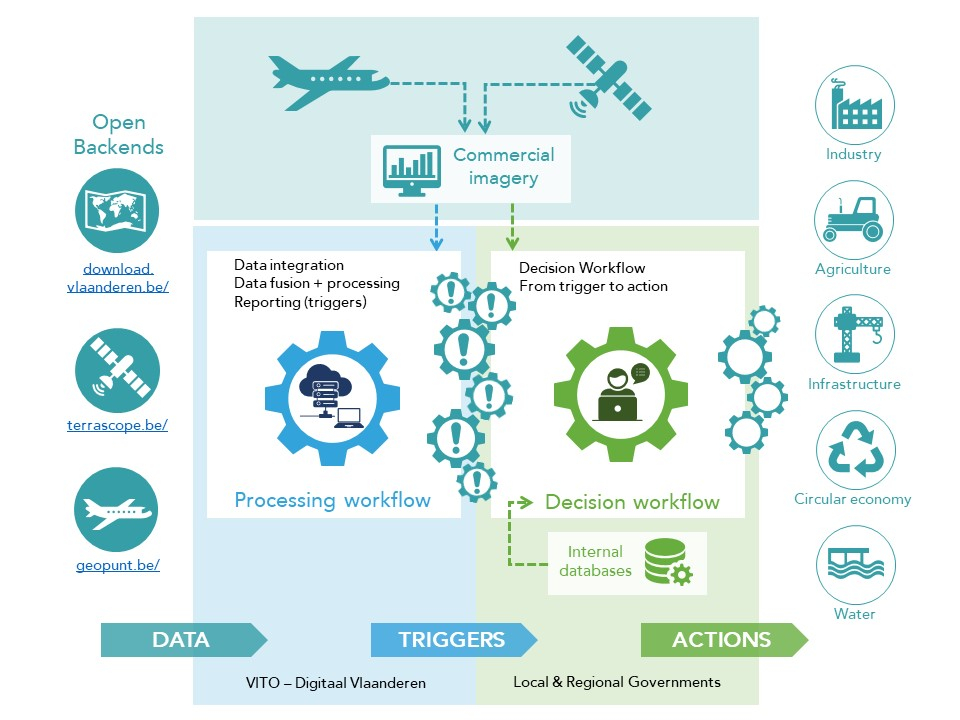Publié le 8 juin 2023
Towards a more dynamic mapping of Flanders' cities
Digital twins are virtual models that mimic the physical, social and environmental aspects of real cities and communities. These models leverage geospatial information and enable policy makers, civilians and companies to draw realistic simulations and define well-defined scenarios for urban planning, management and innovation. Together with the Earth Observation Data Science group of Digitaal Vlaanderen, we are looking into leveraging Artificial Intelligence (AI) for automated change detection services to support the development and maintenance of such virtual models.

A key component in Flanders' distributed digital twin
The GRB (Grootschalig Referentiebestand), a digital reference map of Flanders, is an essential building block to create a digital twin of Flanders since it contains every civil infrastructure object (buildings, roads, waterways, parcels, …) and every object is labelled. Since civil infrastructure is continuously changing, there is also a strong need to optimize the maintenance operations of the GRB. Aerial imagery is one of the main data sources to detect changes and with the advances in AI technology it becomes highly interesting to automate aspects of the overall change detection process. A more fluently maintainable GRB provides policy makers with better actual data for their urban planning, resource management and circular economy applications.
Aerial imagery and computer vision for change detection
VITO Remote Sensing and the Earth Observation Data Science group of Digitaal Vlaanderen (EODaS) have an extensive expertise in using remote sensing technology and leveraging Artificial Intelligence for innovative solutions. One of the ongoing activities is the evaluation of the potential of a transformer-based foundation model, DINO-ViT. Its versatility enables it to tackle multiple problems simultaneously:
- one-shot classification: this model can detect and visualize similar areas across the aerial photo mosaic on condition that one or multiple similar areas are selected
-
Urban fabric change detection: a positive or negative mask (likelihood of change or no-change) can be computed based on the similarity of the same location across several years, reducing the burden of annotation on human operators
Since the GRB is a reference database used in many digital systems of the user-community, its maintenance is an important operational process that must be carried out with great care. In subsequent steps, VITO Remote Sensing and Digitaal Vlaanderen (teams GRB and EODaS) will evaluate if this AI-technology can be introduced into operational processes to assist e.g. GIS operators in their change management tasks.
Contact us to discover more or find out how you can use remote sensing and AI-driven technology to support your business.
Source:
AI-driven change detection in the GRB of Flanders. (2023, June 6). VITO Remote Sensing.